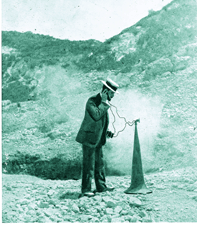
- Select a language for the TTS:
- UK English Female
- UK English Male
- US English Female
- US English Male
- Australian Female
- Australian Male
- Language selected: (auto detect) - EN
Play all audios:
Access through your institution Buy or subscribe THEORETICAL GLOBAL SEISMOLOGY * _F. A. Dahlen & _ * _Jeroen Tromp_ Princeton University Press: 1998. 1,025pp $80, £60 Since the
underlying seismic motion can be quantified using linear wave equations, and since the Earth is a body of finite size, we know that all seismic motions of our planet can be expressed as a
sum of the Earth's normal modes. Conceptually, every seismogram of every earthquake and explosion is a sum of the same set of decaying sinusoids, each of which begins its oscillation at
every point of the planet when the earthquake begins. In practice, the set sums to zero until the first body wave arrives, and thereafter it is a representation of the ground motion at that
recording station. This is a preview of subscription content, access via your institution ACCESS OPTIONS Access through your institution Subscribe to this journal Receive 51 print issues
and online access $199.00 per year only $3.90 per issue Learn more Buy this article * Purchase on SpringerLink * Instant access to full article PDF Buy now Prices may be subject to local
taxes which are calculated during checkout ADDITIONAL ACCESS OPTIONS: * Log in * Learn about institutional subscriptions * Read our FAQs * Contact customer support AUTHOR INFORMATION AUTHORS
AND AFFILIATIONS * the Lamont-Doherty Earth Observatory, Palisades, 10964, New York, USA Paul G. Richards Authors * Paul G. Richards View author publications You can also search for this
author inPubMed Google Scholar RIGHTS AND PERMISSIONS Reprints and permissions ABOUT THIS ARTICLE CITE THIS ARTICLE Richards, P. Earth's internally generated motions. _Nature_ 397,
489–490 (1999). https://doi.org/10.1038/17268 Download citation * Issue Date: 11 February 1999 * DOI: https://doi.org/10.1038/17268 SHARE THIS ARTICLE Anyone you share the following link
with will be able to read this content: Get shareable link Sorry, a shareable link is not currently available for this article. Copy to clipboard Provided by the Springer Nature SharedIt
content-sharing initiative








